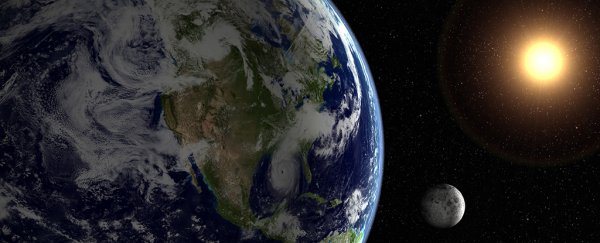Those two orbs we see in the sky during the day and night have even more of an influence on the animals and plants on Earth than you might think.
The gravitational pull of the Sun and Moon really does appear to affect flora and fauna activity, although the exact mechanisms by which this happens remain unclear, new research suggests.
From a meta-analysis of previous studies, researchers suggest gravitational tides can change the way that animals and plants sleep, move, and grow – even when other triggers (such as the cycles of night and day) are factored out.
While gravitational tides of the Sun and the Moon might be comparatively weak – only a millionth of the pull of Earth's gravity when combined – the research shows that these tides are still an important consideration when weighing up organisms' behavior.
"All matter on Earth, both live and inert, experiences the effects of the gravitational forces of the Sun and Moon expressed in the form of tides," biophysicist Cristiano de Mello Gallep from the University of Campinas (UNICAMP) in Brazil told Agência FAPESP.
"The periodic oscillations exhibit two daily cycles and are modulated monthly and annually by the motions of these two celestial bodies. All organisms on the planet have evolved in this context."
The team looked at three previous studies in particular, where gravitational tide information was available. In a 1965 study of isopods (small, shell-less crustaceans), it was noted that the swimming patterns of the creatures kept to the flow of the ocean's gravitational tides (cycles of around 12.4 hours) even when they were moved to water in the lab with an artificial tide.
Another source was a 1985 study involving coral, where coral growth and larvae production were shown to match local gravitational tides under the influence of the Sun and the Moon.
Finally, a 2014 study looking at seed germination in sunflowers – backed up by new experiments run by the authors of the meta-analysis – again found evidence that germination was in step with lunar and solar gravitational patterns. Several other previous studies were also referred to by the researchers.
"The data shows that in the absence of other rhythmic influences such as lighting or temperature, local gravitational tides are sufficient to organize the cyclical behavior of these organisms," says Gallep.
"This evidence questions the validity of so-called free-run experiments, in which several environmental factors are controlled but gravitational oscillations are not taken into consideration. These oscillations continue to exist, and may modulate the behavior of living organisms."
In the case of the isopods, for example, the organisms were observed following swimming patterns that matched the gravitational tides of the environment they were taken out of, even several days after being moved to the lab.
The influence of these tides on animals and plants has been written about for many years in scientific studies, but the aim of the new meta-study was to bring attention to its pervasiveness and the need to consider it more widely in research projects.
We know that the Large Hadron Collider needs to be slightly but repeatedly adjusted to take these gravitational tides into account, and that these subtle forces can also influence human sleep cycles – especially when we're not aware of day and night.
"What we sought to show in the article is that gravitational tides are a perceptible and potent force that has always shaped the rhythmic activities of these organisms," says Gallep.
The research has been published in the Journal of Experimental Botany.
